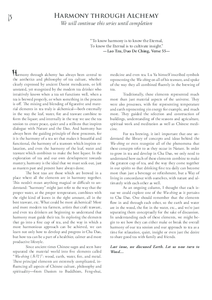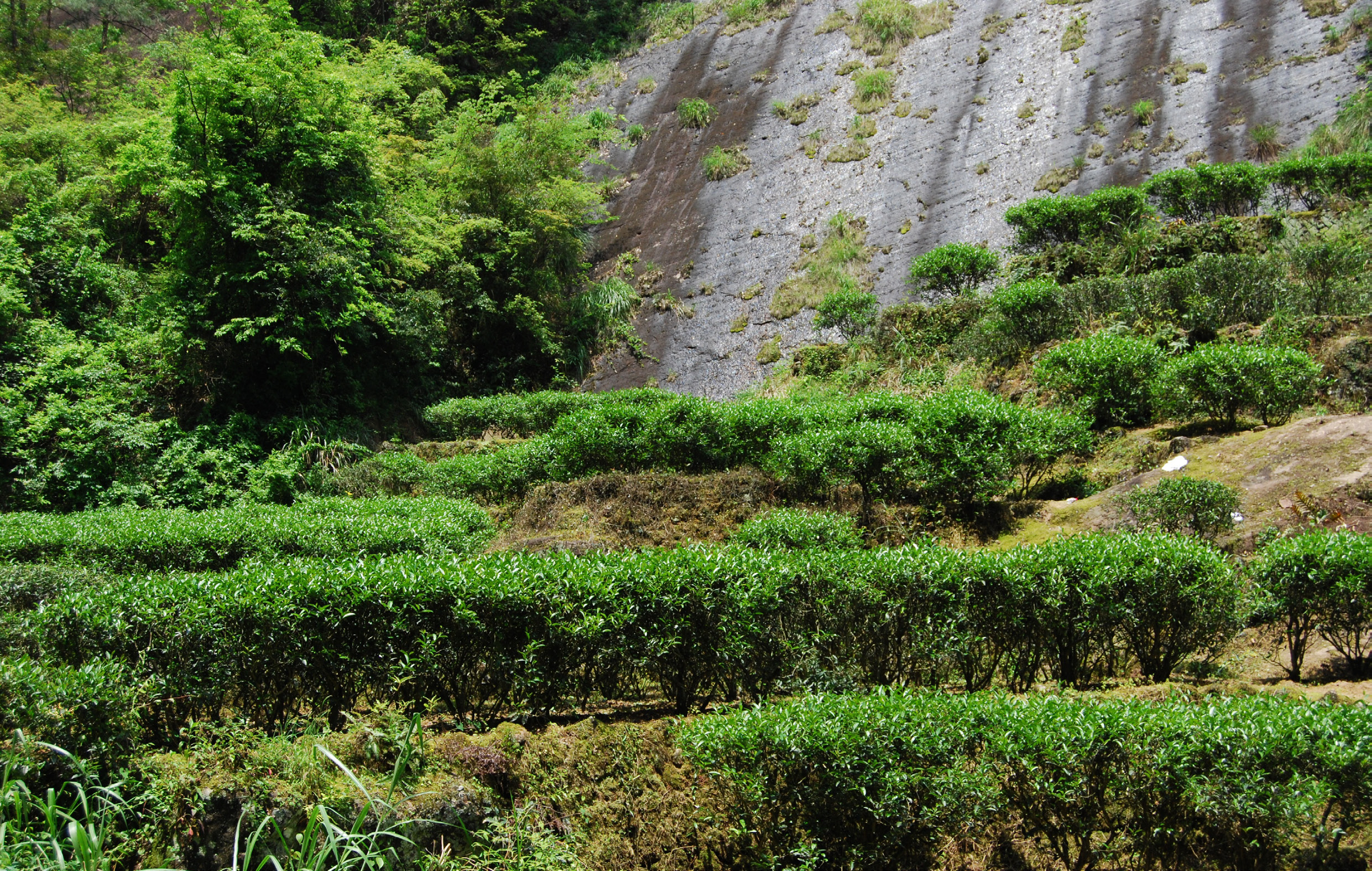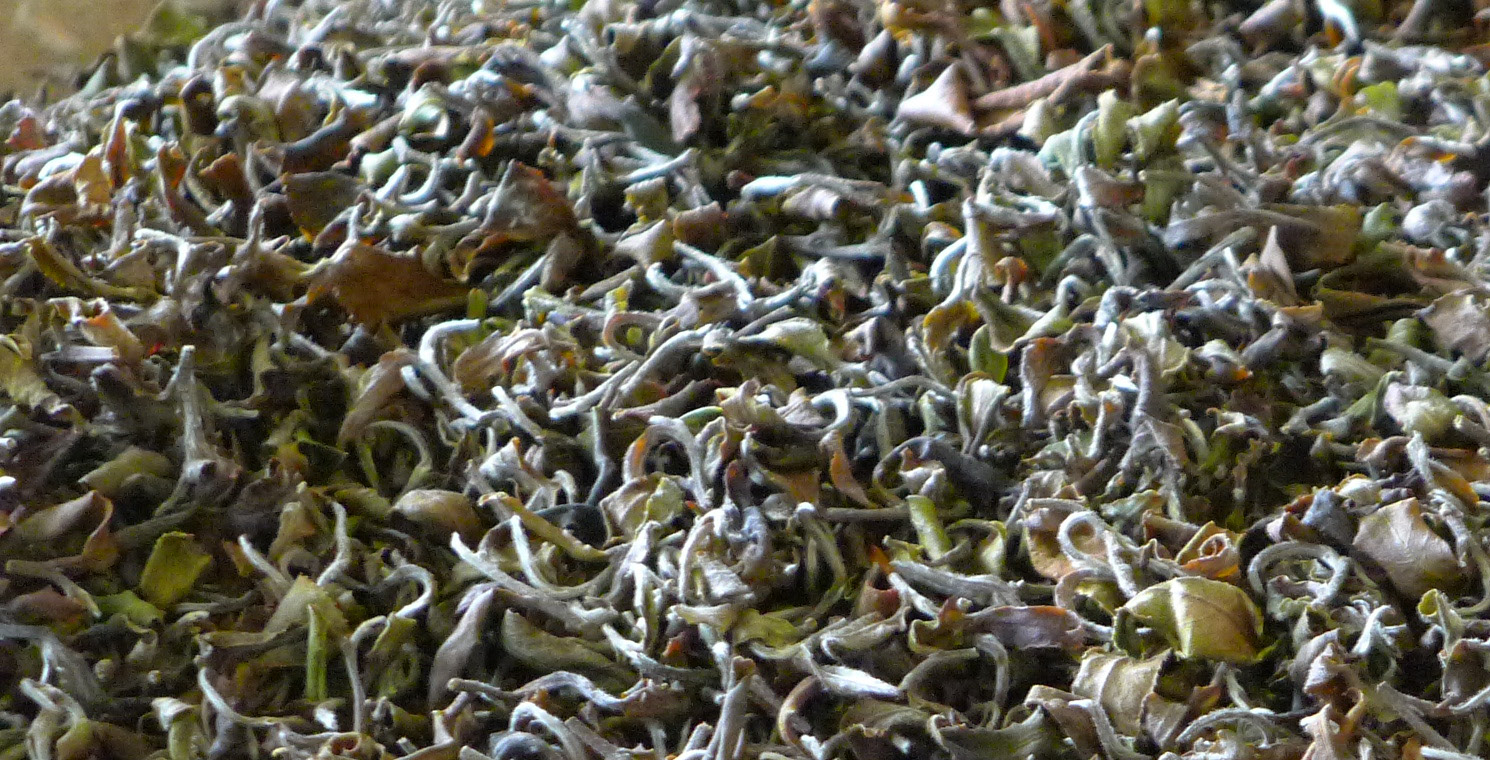
 |
|
"To know harmony is to know the Eternal, To know the Eternal is to cultivate insight."
Harmony through alchemy has always been central to the aesthetics and philosophy of tea culture, whether clearly expressed by ancient Daoist mendicants, or left unstated, yet recognized by the modern tea drinker who intuitively knows when a tea set functions well, when a tea is brewed properly, or when something in the process is off. The mixing and blending of figurative and material elements in tea truly is alchemical - both externally in the way the leaf, water, fire and teaware combine to form the liquor; and internally in the way we use the tea session to create peace, quiet and a stillness that inspires dialogue with Nature and the Dao. And harmony has always been the guiding principle of these processes, for it is the harmony of a tea set that makes it beautiful and functional, the harmony of a tearoom which inspires relaxation, and even the harmony of the leaf, water and teaware which combines to make the best liquor. In the exploration of tea and our own development towards mastery, harmony is the ideal that we must seek out, just as masters past and present have always done.
The best teas are those which are brewed in a place where all the elements are in harmony together. This needn't mean anything magical or difficult to understand: "harmony" might just refer to the way that the proper water, at the proper temperature, combines with the right kind of leaves in the right amount, all in the best teaware, etc. What could be more alchemical? More and more modern tea farmers, artists that craft teaware, and even tea drinkers are beginning to understand that harmony must guide their tea. In exploring the elements that go into a fine cup of tea, and the way in which a more harmonious approach can be achieved, we can learn not only how to develop and progress in Cha Dao, but how tea can be a part of a healthier, calmer and more productive lifestyle.
Since ancient times Chinese sages and seers have separated the material world into five elements called "Wu-shing (五行)": wood, earth, water, fire, and metal. These principal elements are extremely complicated, influencing all aspects of Chinese culture, philosophy and spirituality - from Daoism to Buddhism, Feng-shui, medicine and even tea. Lu Yu himself inscribed symbols representing the Wu-shing on all of his teaware, and spoke of the way they all combined fluently in the brewing of tea.
Traditionally, these elements represented much more than just material aspects of the universe. They were also processes, with fire representing temperature and earth representing yin energy for example, and much more. They guided the selection and construction of buildings, understanding of the seasons and agriculture, spiritual work and meditation as well as Chinese medicine.
For tea brewing, it isn't important that one understand the library of concepts and ideas behind the Wu-shing or even recognize all of the phenomena that these concepts refer to as they occur in Nature. In order to grow in tea and develop in Cha Dao, we only need to understand how each of these elements combine to make the greatest cup of tea, and the way they come together in our spirits so that drinking fine tea daily can become more than just a beverage or refreshment, but a Way of living in concordance with ourselves, with nature and ultimately with each other as well.
As an ongoing column, I thought that each issue we could explore one of the Wu-shing as it pertains to Cha Dao. One should remember that the elements flow in and through each other, so the earth and water are in the wood, the fire in the water, etc., and we're just separating them conceptually for the sake of discussion. In understanding each of these elements, we might begin to see how they can either make or break the overall harmony of our tea session and our approach to tea as a time for relaxation, quiet, insight or even just the desire to share good tea with family and friends. Last issue, we discussed Earth. Let us now turn to Wood...
Pointing us down the road of the other elements, there's a wooden sign where this Way begins: the tea itself. As we mentioned before, all the elements are in the others, and a tea tree is brimming with earth, water, temperature and metal. The elements also cycle into one another, as fire consumes wood into ash, which returns to the earth, becomes metal and also gathers water to course through wood again. The patterns are endless, and regress into one another infinitely.

Out of Nature came this amazing signal, and a medicine powerful enough to tell us of our own origins. And it is with this plant that our mastery begins, and that we live a life of tea and Dao. Native American shamans believed that the medicine of any plant could be found through any other plant, so that one could access the healing properties of goji berries through tea, for example. This is because the plants are connected, not only to each other and the earth, but also to what is beyond through the photosynthesis of starlight.
Imagine being born with all the collective wisdom and memory of your entire ancestry. It is thus for tea, bringing genetic light from the other side. It speaks for the entire plant kingdom, and beyond the conceptual boundaries we call "plant", because these beings - these portals - don't distinguish between themselves and the water; they are the water. They don't call the mountain "other than" their roots. They are the mountain. And this connection and completion is the healing they bring us: for when we drink tea, we also erase these imaginary boundaries and take into our bodies water and leaves, and all they are connected to.
Living teas are a hazing of the boundaries between us and Nature, as well as between each other. You could say that they are a walk in the forest; and then we are the forest, as much a part of it as any other animal in it. Living things go with their environment; and a study of a river, for example, is also a study of the beings that inhabit it. Anything the fish who live in that river do affects their environment, and is registered as a change in the environment by the biologist studying it, and vice versa.
To understand tea you must first learn to connect to it. Then it will tell you its story. Beyond count, we have witnessed tea masters tell us the season, mountain and weather just from sipping a tea. It told them its story, and without uttering a human word. This is because they learned its language, and are then translating what it said to us. And you needn't have studied tea for long to do this. We were once astounded by a sensitive woman who had never drunk tea before, and yet when asked to comment about the tea she was drinking began by saying, "I see a..." and then went on to describe in miraculouslyaccurate detail the environment the tea came from. It had "told" her of its home and heritage. Tea can also speak volumes of wisdom, too - even about being human, as it has thousands of years of experience doing that as well.
In this tradition, we always say: "as the man seeks the Leaf, the Leaf seeks the man." It's about letting the right teas find you, and about respecting that they have their own destiny and power, and can seek out the time and place they want to become human. Living teas have a way of showing up, and at just the right time and place. Let the best teas find you, rather than straining for certain flavors or kinds of experience. And that is a powerful lesson for how to live life, in general!
That said, if you are looking for elemental purity to complete the alchemy that transmutes tea into the Elixir of Life, you should understand living, "real" tea. Living teas come from seed-propagated trees, born and grown naturally. They are given the breadth and space to grow organically. Such tea trees are left to develop a relationship with their environment: wind and water, mountain and plants, sun, moon and starlight. In that way, they receive a genetic light from the seed, which whispers into the tree billions of years of life on this planet and beyond. And from their connection to the mountain, the tea's wisdom extends that healing power, becoming a connection to the heart of this Mother Earth.

Twisted away from its nature, tea becomes a human commodity: bought and sold, discussed and debated in hedonistic terms and ultimately with much less healing power. Bushes are cloned, chemicals used and the environment destroyed - the teas' only nutrients then become the chemical ones the farmer feeds it. It then loses the connection to its genetic heritage, having been cloned rather than birthed in soul as it was intended to be. And without a connection to living soil, mountain and other plants and animals - without a seat in the giveaway council it should rightly sit upon with all the other local plants and animals - without any of that, its spirit voice is weak and muted (though not gone completely).
All living things are a part of this globe, and the energies beyond it. We all give and take from each other. The plants and animals understand this give-away and always maintain balance, rectifying disharmony in council. Much of humanity is now one such disharmony - one that will eventually be balanced, one way or the other. From a higher perspective, even the warps and woofs we call "disharmonies" are all part of a greater musical balance, the way the twists and turns of a river straighten out when viewed from the eagle's height, or soaring on the back of the black dragon.

You will know when a tea is alive, for it will freely and unconditionally give all its energy and life to you when you drink it. All that it has accumulated from the mountain, water, sky and earth will drain into you. It doesn't hesitate in this giving, not even for an instant and not ever with any sense of self. Just as it was connected in the receiving of life and energy from its environment, so too is it connected in the giving of all that it has to you. Your body will awaken to it. And if you are listening, it will share its spirit with you as well.
We have talked at great length in these newsletters about tea's connection to the earth, and beyond to the stars through photosynthesis, but not much about the other end of this exchange, which is just as important: the giving. The vastness of this plant's receiving, from its genetic heritage and from its environment would never allow it to hoard this wisdom. Its purpose is in sharing. Tea is meant to flow and be served. Nowhere does Nature accumulate and hoard energy forever - even the sun dies. Energy is accumulated so that it can be shared, and that is the secret to immortality. You don't live forever by hoarding up energy, or empowering yourself - physically or spiritually. You live forever by giving away all that you are to something else, unconditionally. In that way, the same energy transforms and goes on and on. In your body, if you look closely, you will see in your very hand an unbroken movement of energy that extends back and back to the very star out of which this whole earth was born. Of course, tea understands this and gives all that it has accumulated, as all and everything in Nature has been taught to.
When we constrict, all suffering becomes a privation to be borne by ourselves alone. But when we connect, we share our suffering with all that is; and the dance goes ever on. Our energy and life then lives on in other forms, other dances - perhaps to and from the trees. So much of spirituality is about an allowing: Allow the tea in; receive it the way it receives its environment - sun and moon, mountain and water. In that way, the connection goes on in you. And then, thoroughly steeped in liquor, you will turn and pour it for another. In a flash - quick enough to tear your eyes - it will be you passing the bowl you once received to another with eyes just as eager as yours are now...